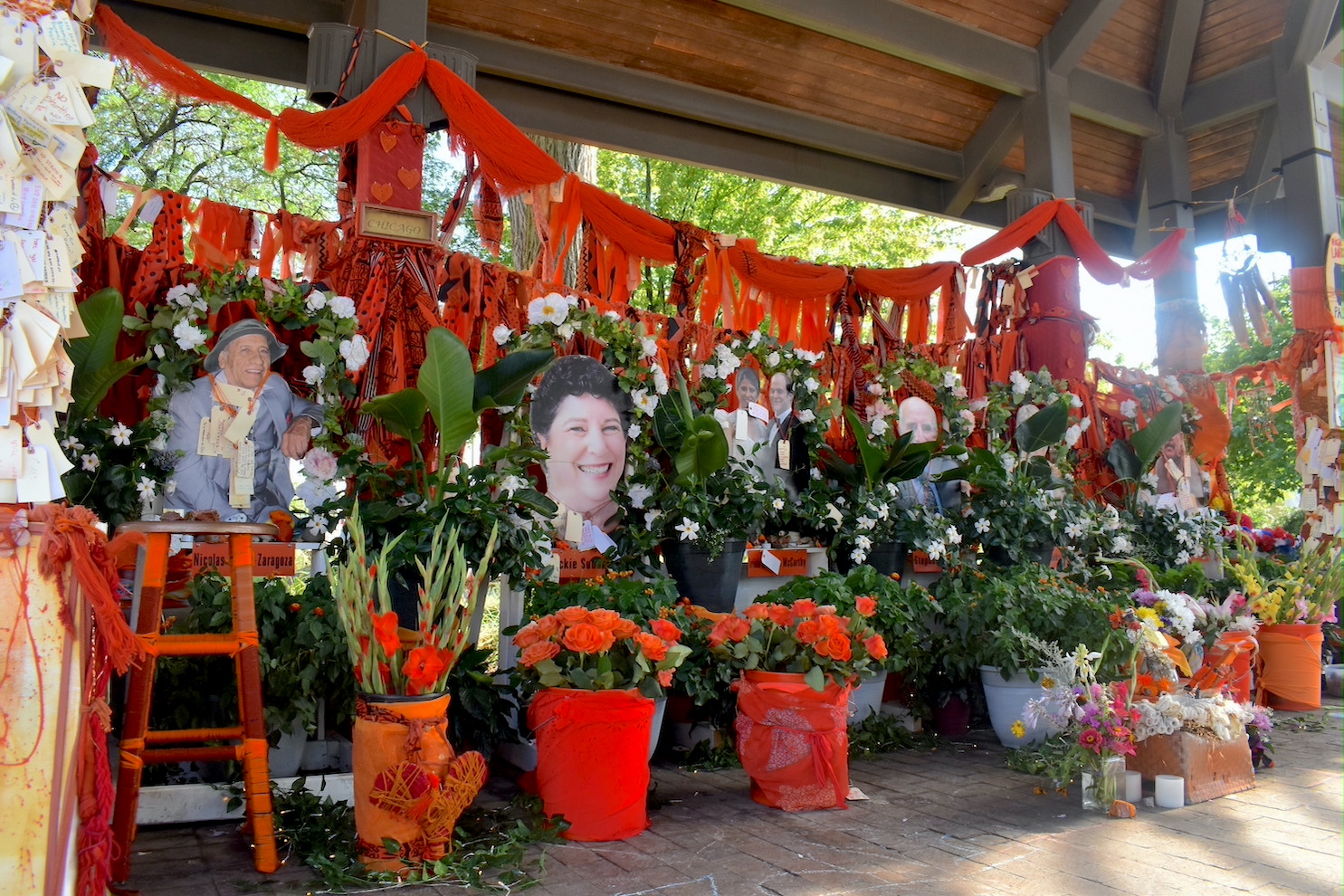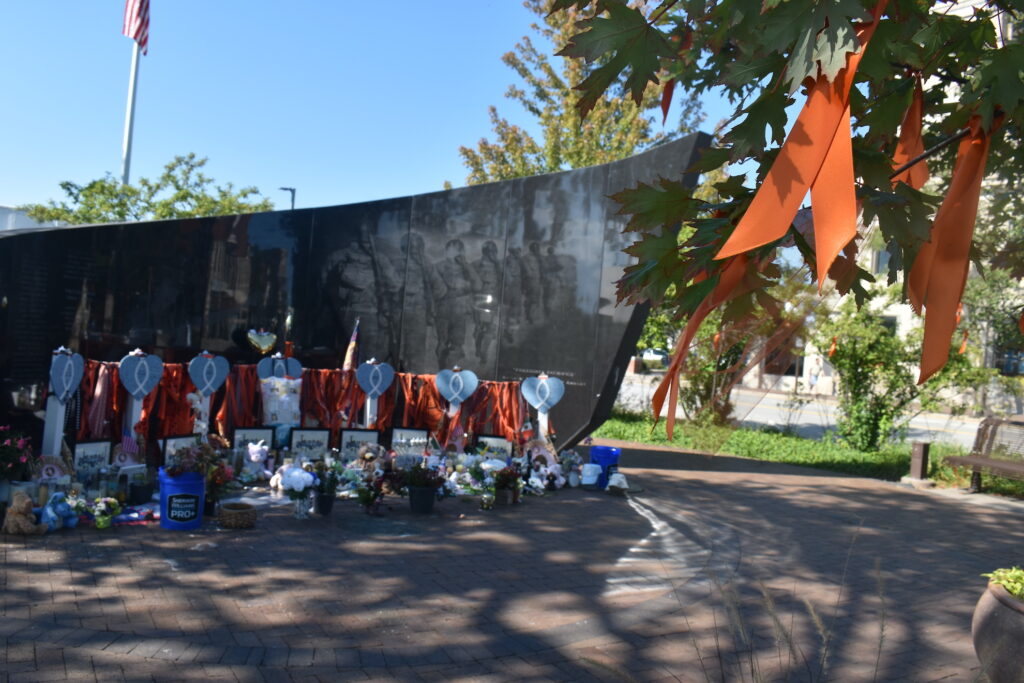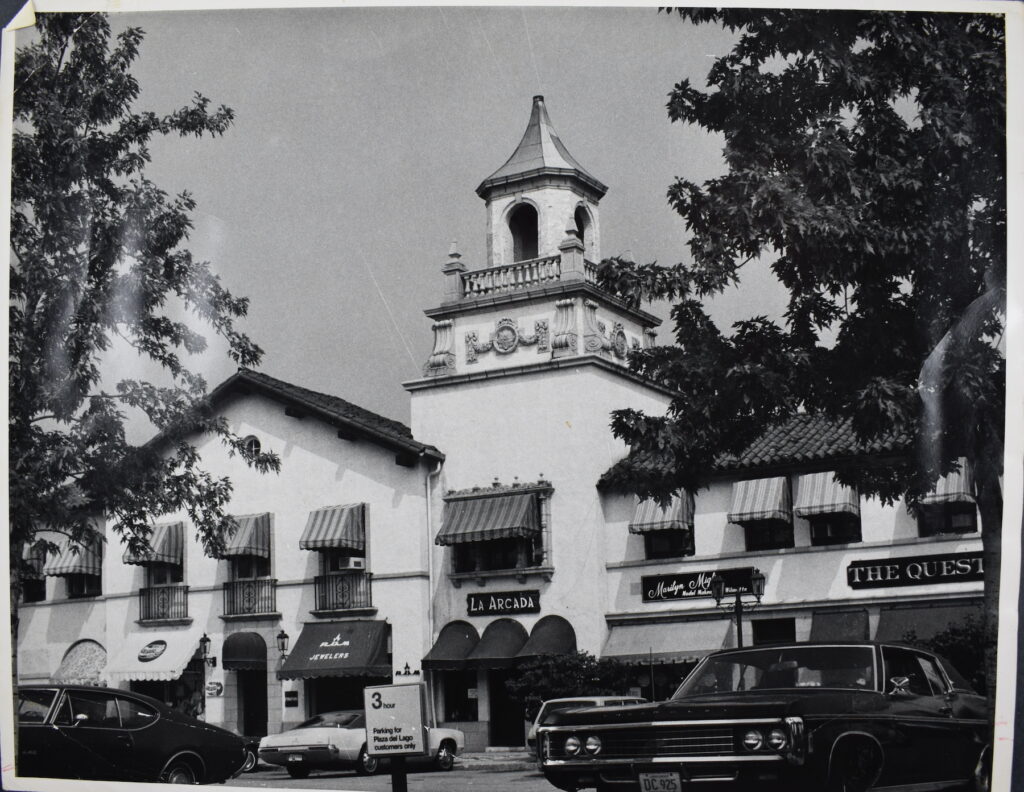
Highland Park’s temporary memorial to move to City Hall rose garden; anti-gun-violence art project will get separate home
While many individuals have found comfort and community in the memorials that arose following the July 4 mass shooting in Highland Park, many others have found pain and distress in their continued and prominent presence, according to residents and City Council members Tuesday night.
The special committee of the whole session Sept. 28 welcomed testimony from community members as the council weighed next steps for the temporary memorials currently displayed at a visible downtown location — the northwest and southwest corners of St. Johns and Central avenues.
Prior to considering new ideas, council member Adam Stolberg and his colleagues talked about the difficulties of the topic.
“How do we protect … (the) right to mourn without asking others to relive (the tragedy) every day if they don’t want to?” he said. “It’s a really tough decision to make. … For me, this is the hardest thing I’ve had to do.”
Signaling the importance of considering everyone’s pain, the council decided to relocate the temporary memorial to the rose garden at City Hall — a more secluded but accessible outdoor venue near the downtown. Council members also agreed to separate the orange art installation that represents the anti-gun violence movement and clear July 4 remembrance items that share space with the Veterans Memorial wall on the north side of Central Avenue.
The council hopes the relocation can be in cooperation with the general public, and efforts to coordinate that process are underway by City staff. Further information, including timing, will be made public, officials said.
Following the meeting, the City released a question-and-answer document to help explain the decision and future of the memorials.
In the days following the July 4 tragedy — in which a gunman shot more than 40 people, killing seven, at Highland Park’s Independence Day parade — impromptu memorials for the event’s victims and survivors were erected at multiple locations in the City’s downtown.
Visited by thousands in the wake of the shooting, the spaces continually evolved. Images of the victims displayed on easels, mounds and buckets of fresh flowers, compassionate messages painted on rocks, inspirational letters to 8-year-old survivor Cooper Roberts, orange ribbons opposing gun violence tied to tree limbs and hanging from structure posts: They all became part of the display.
A few weeks into the town’s recovery journey, though, residents began to contact City officials urging them to remove, relocate or scale back the memorials because of the emotional pain they caused.
Lilla Makkai Daniels, who owns Irina Makkai Classical Ballet & Dance School in Highland Park, told the council that her students could not avoid the space.
“I am happy this memorial has helped some in the community heal, but for myself, my family and my students, it is a constant reminder of the tragic events of July 4,” she said, fighting back tears. “It is big and it is bold and we are forced to see it every day and we have no reprieve.”
Under the context described by Daniels, Rotering agreed that many residents who travel downtown are “forced” to view the memorial that stretches under the arcade from St. John’s Street to the train tracks, about 150 feet.
The majority of the council believed a more secluded space — such as the rose garden near City Hall — would provide an “opt-in” experience for the memorial. A similar thought process was executed when City officials relocated another impromptu memorial from Port Clinton Square back in August.

Still, others thought the memorial should remain. Council members Michelle Holleman and Annette Lidawer expressed hesitation to move the memorial away from the spot that was chosen by the community.
Susanna Uvaldo, the daughter of July 4 victim Eduardo Uvaldo, said it is too soon to move the memorial and urged the council to leave it in the same space until a permanent memorial can be erected.
“That would mean the world to us,” said Uvaldo, who was visibly shaken.
Rotering took a timeout from the memorial discussion to express to Uvaldo Highland Park’s commitment to the loved ones of Uvaldo and all of the victims.
“Your family is part of us and you are part of us. You are Highland Park,” Rotering said. “It doesn’t matter where you live. … Our heart breaks and continues to break with you. Please don’t ever think that there is anything less than absolutely love and value and compassion for the loss you are experiencing.”
The council was in agreement on removing the memorial materials that are on display in front of the Veterans Memorial wall, all expressing a desire to restore the space to its original intention.
Members all agreed to separate the art installation, with its thousands of orange ribbons and notetags, from the victims’ memorial.
The artwork is an offshoot of the public art project, “Enough,” by Jacqueline von Edelberg, a Highland Park resident. Her work has protested gun violence long before the Highland Park shooting. City officials felt it should not be intertwined with the memorial, and City Manager Ghida Neukirch pointed out that public art displays usually require City approval.
Rotering and company agreed that the City will work with von Edelberg and the community on finding a new home for the expression, if the artist wishes to do so.
The council pledged to retain a temporary memorial until a permanent one is established, with Rotering saying, “There will not be a day where there will not be a place for our community to reflect, remember and process this event.”
Before the relocation and removal of the memorials, the City plans to enlist an archivist to catalog all the items and notify the community if anybody would like to pick up personal items.
Decisions on a permanent memorial are still months away. City officials say based on feedback from federal officials and individuals from other tragedy-stricken communities that discussions on the topic should not take place until at least a year removed from the incident — “to allow victims who were physically injured to be able to participate in the process, and to give the loved ones of the victims and the community as a whole time to be able to move forward together.”
The Record is a nonprofit, nonpartisan community newsroom that relies on reader support to fuel its independent local journalism.
Subscribe to The Record to fund responsible news coverage for your community.
Already a subscriber? You can make a tax-deductible donation at any time.

Joe Coughlin
Joe Coughlin is a co-founder and the editor in chief of The Record. He leads investigative reporting and reports on anything else needed. Joe has been recognized for his investigative reporting and sports reporting, feature writing and photojournalism. Follow Joe on Twitter @joec2319


